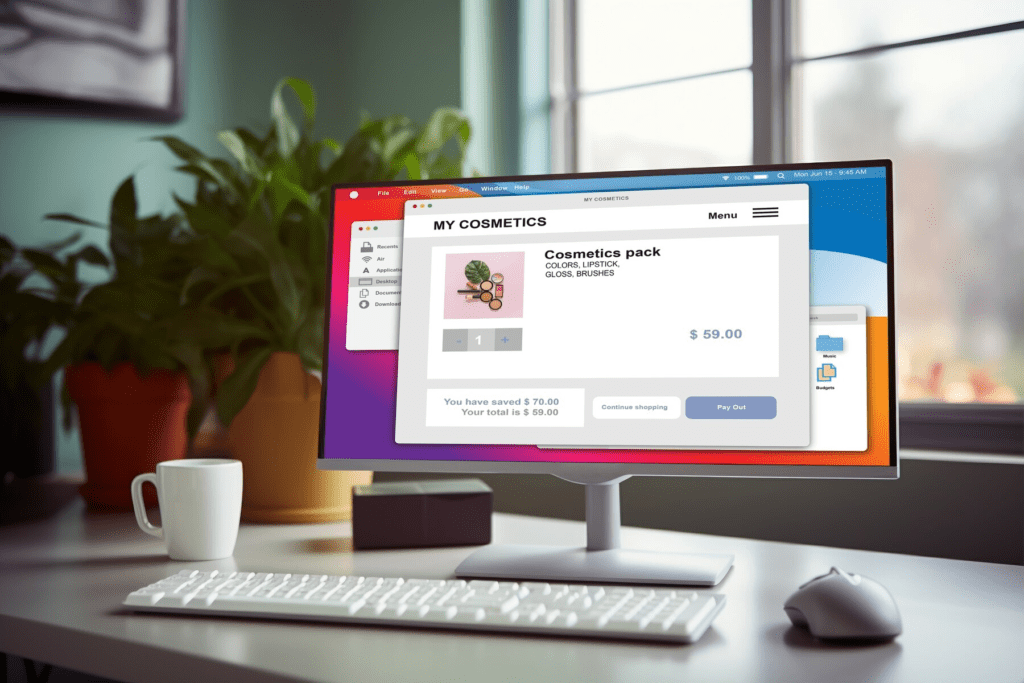Key Takeaways
- Understand the core of digital advertising: Ad server software manages ad delivery, targeting, and optimization for effective campaigns.
- Empower your marketing strategy: Learn how ad server software enhances ad performance and streamlines campaign management.
- Stay ahead in the digital landscape: Embrace emerging trends like programmatic advertising and AI-driven optimization to leverage the full potential of ad server software.
In the ever-evolving landscape of digital advertising, one integral component reigns supreme in orchestrating the seamless delivery and management of online advertisements: ad server software.
From the moment you click on a webpage or launch a mobile app, a complex behind-the-scenes process unfolds, driven by sophisticated algorithms and cutting-edge technology.
But what exactly is ad server software, and how does it work?

In this definitive guide, we embark on a journey to unravel the mysteries surrounding this indispensable tool, shedding light on its inner workings and illuminating its pivotal role in the realm of digital marketing.
As the digital ecosystem continues to burgeon with a plethora of online platforms and channels, advertisers and publishers alike grapple with the daunting task of effectively reaching their target audiences amidst the cacophony of competing messages.
Enter ad server software – the linchpin that bridges the gap between advertisers seeking to disseminate their messages and publishers endeavoring to monetize their digital real estate.
At its core, ad server software serves as the nerve center of digital advertising campaigns, orchestrating the intricate dance between advertisers, publishers, and consumers with finesse and precision.
But before delving into the intricacies of its operation, let us first demystify the essence of ad server software.
Simply put, ad server software encompasses a suite of sophisticated tools and technologies designed to manage and optimize the delivery of online advertisements across various digital platforms.
From websites and mobile apps to video streaming services and social media networks, ad server software empowers advertisers to target their desired audience segments with pinpoint accuracy while providing publishers with the means to monetize their digital inventory efficiently.
At its essence, ad server software operates on a simple yet robust premise: to deliver the right ad to the right user at the right time.
However, beneath this seemingly straightforward objective lies a labyrinth of intricacies and complexities that necessitate a deeper understanding to navigate effectively.
From ad inventory management and targeting to delivery and optimization, ad server software encompasses a myriad of functionalities that work in concert to ensure the seamless execution of digital advertising campaigns.
Throughout this guide, we will embark on an immersive exploration of the core components of ad server software, delving into the intricacies of ad inventory management, targeting algorithms, and delivery mechanisms.
We will unravel the mysteries surrounding the ad trafficking process, shedding light on the journey that an ad undertakes from conception to consumption.
Furthermore, we will examine the benefits of ad server software for both advertisers and publishers, elucidating how it empowers them to maximize their return on investment and achieve their marketing objectives with unparalleled efficacy.
But our journey does not end there.
As the digital advertising landscape continues to evolve at breakneck speed, so too does the functionality and scope of ad server software.
From the integration of programmatic advertising technologies to the advent of advanced analytics and artificial intelligence, the future of ad server software holds boundless promise and potential.
By staying abreast of the latest trends and innovations in the field, advertisers and publishers can harness the full power of ad server software to propel their digital marketing efforts to new heights of success.
In the sections that follow, we invite you to embark on a voyage of discovery as we unravel the mysteries of ad server software and unveil the secrets of its inner workings.
Whether you’re a seasoned advertising professional seeking to optimize your campaigns or a curious newcomer eager to learn more about the world of digital marketing, this guide promises to be your indispensable companion on the journey to mastering the art and science of ad server software.
So buckle up, dear reader, and prepare to embark on an odyssey into the heart of digital advertising – where innovation meets imagination, and possibilities abound.
Before we venture further into this article, we like to share who we are and what we do.
About 9cv9
9cv9 is a business tech startup based in Singapore and Asia with a strong presence all over the world.
With over eight years of startup and business experience, and being highly involved in connecting with thousands of companies and startups, the 9cv9 team has listed some important learning points in this overview of What is Ad Server Software and How Does It Work.
If your company needs recruitment and headhunting services to hire top employees, you can use 9cv9 headhunting and recruitment services to hire top talents and candidates. Find out more here, or send over an email to [email protected].
Or just post 1 free job posting here at 9cv9 Hiring Portal in under 10 minutes.
What is Ad Server Software and How Does It Work
- Understanding Ad Server Software
- Core Components of Ad Server Software
- How Ad Server Software Works
- Benefits of Ad Server Software
- Common Use Cases of Ad Server Software
- Future Trends in Ad Server Software
1. Understanding Ad Server Software
What is Ad Server Software?
- Ad server software refers to a comprehensive suite of tools and technologies designed to manage and optimize the delivery of online advertisements across various digital platforms.
- It acts as the central hub for coordinating the entire ad serving process, from ad inventory management to ad delivery and optimization.

Importance of Ad Server Software in Digital Advertising
- Efficient Ad Delivery: Ad server software ensures that ads are delivered to the right audience at the right time, maximizing their impact and relevance.
- Optimized Ad Targeting: By leveraging advanced targeting algorithms, ad server software enables advertisers to reach specific audience segments based on demographics, interests, and behavior.
- Effective Campaign Management: Ad server software streamlines the process of setting up, monitoring, and optimizing digital advertising campaigns, allowing advertisers to achieve their marketing objectives with precision and efficiency.
Ad server software plays a pivotal role in the digital advertising ecosystem, empowering advertisers and publishers to reach their target audiences with precision and efficiency.
By understanding its core components, functionality, and benefits, advertisers and publishers can leverage ad server software to optimize their digital advertising efforts and achieve their marketing objectives with unparalleled success.
2. Core Components of Ad Server Software
Ad server software comprises several essential components that work together seamlessly to manage and optimize the delivery of online advertisements.
Understanding these core components is crucial for advertisers and publishers alike to maximize the effectiveness of their digital advertising campaigns.
Ad Inventory Management
- Ad inventory management involves organizing and managing the available advertising space or slots on websites, mobile apps, and other digital platforms.
- Ad server software enables publishers to efficiently allocate and monetize their ad inventory by:
- Categorizing ad slots based on factors such as ad size, placement, and targeting criteria.
- Optimizing ad placements to maximize revenue generation while enhancing user experience.
- Example: A publisher utilizes ad server software to manage the ad inventory for their website, categorizing ad slots into premium placements for high-value advertisers and remnant inventory for programmatic advertising.

Ad Targeting
- Ad targeting is the process of delivering ads to specific audience segments based on demographics, interests, behavior, and other targeting criteria.
- Ad server software leverages advanced targeting algorithms to ensure that ads are delivered to the most relevant audience segments, increasing engagement and conversion rates.
- Key targeting options provided by ad server software include:
- Demographic targeting: Targeting users based on age, gender, income, and other demographic attributes.
- Behavioral targeting: Targeting users based on their browsing history, online activities, and past interactions with ads.
- Contextual targeting: Targeting users based on the content of the webpage or app they are currently viewing.
- Example: An e-commerce retailer uses ad server software to target users who have previously visited their website but abandoned their shopping carts, serving them personalized retargeting ads to encourage them to complete their purchase.
Ad Delivery
- Ad delivery refers to the process of serving ads to users across various digital platforms, including websites, mobile apps, video streaming services, and social media networks.
- Ad server software ensures seamless integration and optimal performance by:
- Delivering ads in real-time based on predefined targeting parameters and ad serving rules.
- Optimizing ad delivery to maximize reach, engagement, and conversion rates.
- Monitoring ad performance and adjusting delivery strategies in response to changing market conditions.
- Example: A travel booking website uses ad server software to deliver targeted ads promoting vacation packages to users browsing travel-related content, increasing the likelihood of bookings and conversions.
Ad Tracking and Reporting
- Ad tracking and reporting involve monitoring and analyzing key metrics to evaluate the performance of digital advertising campaigns.
- Ad server software provides comprehensive tracking and reporting capabilities, allowing advertisers and publishers to:
- Track ad impressions, clicks, conversions, and other engagement metrics in real-time.
- Measure campaign performance across various dimensions, such as ad creatives, targeting criteria, and placement.
- Generate detailed reports and insights to optimize campaign strategies and maximize return on investment (ROI).
- Example: An advertiser uses ad server software to track the performance of their display advertising campaign, monitoring metrics such as click-through rate (CTR), conversion rate, and return on ad spend (ROAS) to optimize campaign performance and allocate budget effectively.
In summary, the core components of ad server software play a crucial role in managing and optimizing the delivery of online advertisements.
By understanding these components and leveraging the capabilities of ad server software effectively, advertisers and publishers can maximize the impact of their digital advertising campaigns and achieve their marketing objectives with precision and efficiency.
3. How Ad Server Software Works
Ad server software operates as the backbone of digital advertising campaigns, orchestrating the complex process of delivering ads to targeted audiences across various digital platforms.
Understanding how ad server software works is essential for advertisers and publishers to optimize the effectiveness of their advertising strategies.
Ad Trafficking Process
- Ad Selection: Ad server software selects the most appropriate ad creatives from the advertiser’s inventory based on targeting criteria and ad serving rules.
- Example: An online retailer may specify that a particular ad creative should be displayed to users who have previously visited their website but haven’t made a purchase.
- Scheduling: Ad server software schedules the delivery of ads based on predefined criteria such as time of day, day of the week, and campaign duration.
- Example: A travel agency may schedule ads promoting holiday packages to be displayed during peak booking periods or seasonal events.
- Rotation: Ad server software rotates multiple ad creatives within the same ad placement to prevent ad fatigue and maximize engagement.
- Example: A news website may rotate different ad banners within the same ad slot to ensure that users are exposed to a variety of ad messages over time.
Ad Serving Process
- Real-time Decision Making: Ad server software makes real-time decisions about which ads to serve to users based on their demographics, interests, and online behavior.
- Example: When a user visits a website or mobile app, the ad server software analyzes their profile and browsing history to determine the most relevant ad to display.
- Ad Rendering: Ad server software dynamically generates ad creatives in various formats (e.g., display ads, video ads, native ads) and serves them to users seamlessly within the digital content.
- Example: A user browsing a fashion blog may see a display ad showcasing the latest clothing collection from a fashion retailer.
- Ad Tracking: Ad server software tracks user interactions with ads, such as ad impressions, clicks, and conversions, to measure the effectiveness of ad campaigns.
- Example: When a user clicks on an ad, the ad server software records the click event and redirects the user to the advertiser’s landing page for further engagement.
Targeting and Optimization
- Audience Segmentation: Ad server software segments audiences based on demographic attributes, interests, behavior, and contextual factors to deliver highly targeted ads.
- Example: A sports brand may target ads specifically to users interested in fitness and outdoor activities, based on their browsing history and online interactions.
- Performance Optimization: Ad server software continuously monitors ad performance metrics and adjusts targeting parameters and delivery strategies to optimize campaign performance.
- Example: If a particular ad creative is generating a high click-through rate (CTR) but a low conversion rate, the ad server software may adjust targeting criteria or bidding strategies to improve campaign ROI.
- A/B Testing: Ad server software facilitates A/B testing of ad creatives, landing pages, and other campaign elements to identify the most effective strategies for driving engagement and conversions.
- Example: An e-commerce retailer may run A/B tests on different versions of a product ad to determine which ad copy or imagery resonates best with their target audience.
Ad server software plays a critical role in the execution and optimization of digital advertising campaigns.
By managing the ad trafficking process, serving ads in real-time, and leveraging advanced targeting and optimization techniques, ad server software empowers advertisers and publishers to deliver relevant and engaging ad experiences to their audiences, ultimately driving better results and maximizing ROI.
4. Benefits of Ad Server Software
Ad server software offers a multitude of advantages for both advertisers and publishers, empowering them to maximize the effectiveness of their digital advertising campaigns and optimize revenue generation.
Understanding these benefits is crucial for leveraging ad server software to its full potential.
Improved Ad Performance
- Enhanced Targeting: Ad server software enables advertisers to target specific audience segments with precision, increasing the relevance and effectiveness of ad campaigns.
- Example: A fitness equipment retailer targets ads to users interested in health and wellness, resulting in higher engagement and conversion rates.
- Optimized Delivery: Ad server software optimizes ad delivery based on real-time performance data, ensuring that ads are served at the most opportune moments to maximize impact.
- Example: A travel agency adjusts ad delivery schedules to coincide with peak booking periods, driving higher conversion rates and revenue.

Streamlined Campaign Management
- Efficient Workflow: Ad server software streamlines the process of setting up, monitoring, and optimizing digital advertising campaigns, saving advertisers time and resources.
- Example: An advertising agency manages multiple client campaigns through a single ad server platform, simplifying campaign management and reporting.
- Centralized Reporting: Ad server software provides comprehensive reporting and analytics, consolidating campaign performance data into easy-to-understand dashboards and reports.
- Example: A marketing manager accesses real-time campaign metrics and performance insights through the ad server dashboard, allowing for informed decision-making and strategy adjustments.
Increased Revenue Opportunities for Publishers
- Monetization Efficiency: Ad server software helps publishers maximize revenue by optimizing ad placement, targeting, and pricing strategies.
- Example: A news website increases ad revenue by dynamically adjusting ad pricing based on demand and audience engagement metrics.
- Access to Premium Demand: Ad server software connects publishers with a vast network of advertisers, enabling them to access premium demand sources and command higher ad rates.
- Example: An entertainment website partners with top-tier advertisers through ad server integrations, increasing the value of their ad inventory and revenue potential.
Enhanced User Experience
- Relevant Ad Experiences: Ad server software delivers targeted ads that align with users’ interests and preferences, enhancing their overall browsing experience.
- Example: A fashion blog serves personalized ads showcasing products tailored to users’ style preferences, increasing user engagement and satisfaction.
- Reduced Ad Fatigue: Ad server software rotates ad creatives and optimizes frequency capping to prevent users from experiencing ad fatigue, resulting in a more positive user experience.
- Example: A travel website limits the frequency of ads shown to users to avoid overwhelming them with repetitive messaging, improving user satisfaction and retention.
Data-driven Decision Making
- Actionable Insights: Ad server software provides advertisers and publishers with actionable insights derived from ad performance data, enabling data-driven decision-making.
- Example: An e-commerce retailer adjusts ad creative messaging based on audience engagement metrics and conversion rates, improving ad effectiveness and ROI.
- Performance Optimization: Ad server software facilitates continuous optimization of ad campaigns based on real-time performance data, driving better results and maximizing return on investment.
- Example: A mobile app developer fine-tunes ad targeting parameters to reach high-value users with relevant ad content, increasing app installs and revenue.
In summary, ad server software offers a wide range of benefits for advertisers and publishers alike, including improved ad performance, streamlined campaign management, increased revenue opportunities, enhanced user experience, and data-driven decision-making.
By leveraging these advantages, advertisers and publishers can optimize their digital advertising efforts and achieve their marketing objectives with greater efficiency and effectiveness.
5. Common Use Cases of Ad Server Software
Ad server software serves as a versatile tool for advertisers and publishers across various industries, facilitating the efficient delivery and management of digital advertising campaigns.
Understanding the common use cases of ad server software is essential for maximizing its effectiveness in achieving marketing objectives.
Publisher Use Cases
- Ad Monetization: Publishers utilize ad server software to monetize their digital properties by serving ads to their audience and generating revenue.
- Example: A news website integrates ad server software to display banner ads and video ads, monetizing their content and generating revenue through ad impressions and clicks.
- Ad Placement Optimization: Publishers leverage ad server software to optimize the placement and delivery of ads across their digital properties, maximizing revenue potential.
- Example: A lifestyle blog strategically places ads within high-traffic sections of their website using ad server software, increasing ad visibility and engagement.

Advertiser Use Cases
- Campaign Management: Advertisers use ad server software to manage and optimize their digital advertising campaigns across multiple channels and platforms.
- Example: An e-commerce retailer launches a display advertising campaign targeting users interested in fashion using ad server software, optimizing ad creatives and targeting parameters to drive conversions.
- Audience Targeting: Advertisers leverage ad server software to target specific audience segments based on demographics, interests, and online behavior.
- Example: A travel agency targets users who have recently searched for vacation destinations using ad server software, delivering personalized ads promoting travel packages and deals.
Agency Use Cases
- Campaign Execution: Advertising agencies leverage ad server software to execute and manage digital advertising campaigns on behalf of their clients.
- Example: A digital marketing agency uses ad server software to launch and monitor display, video, and mobile advertising campaigns across various ad networks and publishers.
- Performance Reporting: Agencies utilize ad server software to provide clients with detailed performance reports and insights, demonstrating the effectiveness of their advertising campaigns.
- Example: A marketing agency generates comprehensive reports using ad server software, showcasing key performance metrics such as impressions, clicks, conversions, and return on investment (ROI) to clients.
Network and Exchange Use Cases
- Ad Network Management: Ad networks leverage ad server software to manage and optimize ad inventory across a network of publishers, maximizing revenue opportunities.
- Example: An ad network uses ad server software to dynamically allocate ads to publishers based on audience targeting criteria and ad placement preferences.
- Programmatic Advertising: Ad exchanges utilize ad server software to facilitate real-time bidding and automated ad buying and selling processes.
- Example: A programmatic advertising platform integrates ad server software to enable advertisers and publishers to buy and sell ad inventory in real-time auctions, optimizing ad pricing and targeting.
Mobile App Use Cases
- In-App Advertising: Mobile app developers integrate ad server software to monetize their apps by displaying ads to users while they interact with the app.
- Example: A gaming app incorporates ad server software to display interstitial ads and rewarded video ads, generating revenue from user interactions.
- User Acquisition: Mobile app marketers leverage ad server software to acquire new users and drive app installs through targeted advertising campaigns.
- Example: A fitness app promotes its app installation campaign using ad server software, targeting users interested in health and fitness apps across mobile devices.
Ad server software serves a wide range of use cases across publishers, advertisers, agencies, ad networks, exchanges, and mobile apps.
By leveraging ad server software effectively, organizations can optimize their digital advertising efforts, maximize revenue generation, and achieve their marketing objectives with precision and efficiency.
6. Future Trends in Ad Server Software
As the digital advertising landscape continues to evolve rapidly, ad server software is poised to undergo significant transformations to meet the changing needs and expectations of advertisers, publishers, and consumers alike.
Understanding the future trends in ad server software is essential for staying ahead of the curve and capitalizing on emerging opportunities in the digital advertising space.
Integration of Programmatic Advertising Technologies
- Real-time Bidding (RTB): Ad server software will increasingly integrate RTB capabilities, enabling advertisers to bid on ad inventory in real-time auctions, driving greater efficiency and transparency in ad buying and selling processes.
- Example: An ad server platform incorporates RTB functionality, allowing advertisers to bid on ad impressions based on audience targeting criteria and bidding strategies.
- Header Bidding: Ad server software will support header bidding technology, enabling publishers to maximize revenue by facilitating simultaneous bidding from multiple demand sources before ad calls are made.
- Example: A publisher implements header bidding using ad server software, allowing multiple demand partners to compete for ad impressions, resulting in higher ad rates and increased revenue.
Advanced Analytics and AI-driven Optimization
- Predictive Analytics: Ad server software will leverage predictive analytics to forecast future ad performance and optimize campaign strategies in real-time, enabling advertisers to allocate budget effectively and maximize ROI.
- Example: An ad server platform uses predictive analytics to forecast ad performance based on historical data and market trends, allowing advertisers to make informed decisions about campaign optimization.
- AI-driven Optimization: Ad server software will harness the power of artificial intelligence (AI) and machine learning (ML) algorithms to automate ad targeting, creative optimization, and bidding strategies, enhancing campaign efficiency and effectiveness.
- Example: An AI-powered ad server platform analyzes vast amounts of data to identify patterns and trends, automatically adjusting ad targeting parameters and creative elements to improve campaign performance.
Enhanced Cross-Channel and Cross-Device Targeting
- Unified Audience Targeting: Ad server software will enable advertisers to target audiences seamlessly across multiple channels and devices, delivering consistent and personalized ad experiences to consumers.
- Example: An advertiser uses ad server software to target users across desktop, mobile, and connected TV devices with relevant ad content based on their interests and preferences.
- Identity Resolution: Ad server software will leverage advanced identity resolution techniques to connect user identities across different devices and platforms, enabling more accurate audience targeting and measurement.
- Example: An ad server platform utilizes probabilistic and deterministic matching algorithms to link user identities across devices, allowing advertisers to deliver personalized ad experiences across the entire consumer journey.
Privacy and Compliance Measures
- Enhanced Data Privacy: Ad server software will implement enhanced data privacy measures and compliance standards to protect user privacy and ensure regulatory compliance in an increasingly stringent regulatory environment.
- Example: An ad server platform adopts data anonymization techniques and strict data access controls to safeguard user information and comply with privacy regulations such as GDPR and CCPA.
- Consent Management: Ad server software will facilitate seamless consent management processes, allowing users to exercise control over their data and preferences while enabling advertisers to deliver personalized ad experiences in compliance with privacy regulations.
- Example: An ad server platform integrates consent management tools that enable users to provide explicit consent for data collection and usage, ensuring transparency and compliance with privacy laws.
Embrace of Emerging Ad Formats and Channels
- Interactive Ads: Ad server software will support emerging interactive ad formats such as augmented reality (AR) ads and playable ads, enabling advertisers to engage users with immersive and interactive ad experiences.
- Example: An ad server platform enables advertisers to create and deliver interactive AR ads that allow users to interact with virtual products in real-world environments, driving higher engagement and conversion rates.
- Connected TV (CTV) Advertising: Ad server software will adapt to the rise of connected TV (CTV) advertising, enabling advertisers to reach audiences consuming digital content on streaming platforms and smart TVs.
- Example: An ad server platform integrates CTV ad serving capabilities, allowing advertisers to target users streaming video content on popular OTT platforms and connected devices with relevant ad content.
The future of ad server software is characterized by the integration of programmatic advertising technologies, advanced analytics, AI-driven optimization, enhanced cross-channel targeting, privacy and compliance measures, and the embrace of emerging ad formats and channels.
By staying abreast of these future trends and embracing innovation, advertisers, publishers, and ad tech vendors can capitalize on the opportunities presented by the evolving digital advertising landscape.
Conclusion
Exploring the intricacies of ad server software unveils its pivotal role as the linchpin in the dynamic world of digital advertising.
Throughout this comprehensive guide, we’ve delved into the core components, functionality, and benefits of ad server software, shedding light on its profound impact on the effectiveness and efficiency of advertising campaigns.
Ad server software serves as the nerve center of digital advertising campaigns, orchestrating the seamless delivery and management of online advertisements across various digital platforms.
By efficiently managing ad inventory, facilitating precise ad targeting, and optimizing ad delivery, ad server software empowers advertisers to reach their target audiences with precision and relevance.
For publishers, ad server software provides a powerful tool for monetizing digital properties, maximizing revenue potential through strategic ad placement, targeting, and pricing strategies.
By leveraging ad server software, publishers can optimize ad inventory management, enhance user experience, and access premium demand sources, ultimately driving higher ad revenue and maximizing yield.
Looking ahead, the future of ad server software is characterized by the integration of programmatic advertising technologies, advanced analytics, AI-driven optimization, enhanced cross-channel targeting, and the embrace of emerging ad formats and channels.
As the digital advertising landscape continues to evolve, ad server software will play a crucial role in enabling advertisers, publishers, and ad tech vendors to capitalize on emerging opportunities and navigate the complexities of the digital advertising ecosystem.
In essence, ad server software represents the cornerstone of modern digital advertising, empowering advertisers and publishers to connect with their target audiences in meaningful ways, drive engagement and conversions, and achieve their marketing objectives with precision and efficiency.
By understanding the intricacies of ad server software and embracing its capabilities, organizations can unlock the full potential of digital advertising and stay ahead in an ever-evolving digital landscape.
If your company needs HR, hiring, or corporate services, you can use 9cv9 hiring and recruitment services. Book a consultation slot here, or send over an email to [email protected].
If you find this article useful, why not share it with your hiring manager and C-level suite friends and also leave a nice comment below?
We, at the 9cv9 Research Team, strive to bring the latest and most meaningful data, guides, and statistics to your doorstep.
To get access to top-quality guides, click over to 9cv9 Blog.
People Also Ask
What does an ad server do?
An ad server is a technology platform that stores, delivers, and tracks online advertisements. It ensures that ads are served to the right audience, at the right time, and on the right websites or apps. Ad servers also provide metrics to analyze ad performance and optimize campaigns for better results.
What is the difference between an SSP and an ad server?
While both serve ads, an SSP (Supply-Side Platform) connects publishers to ad exchanges, optimizing ad inventory sales. An ad server stores and delivers ads, managing campaigns for advertisers and publishers directly. SSPs focus on monetization, while ad servers handle ad serving and management.
What is the difference between a publisher and an ad server?
A publisher creates and distributes content, hosting ad space for monetization. An ad server, on the other hand, manages and delivers ads, optimizing their display across the publisher’s digital platforms. Publishers focus on content creation, while ad servers handle ad placement and delivery.































![Writing A Good CV [6 Tips To Improve Your CV] 6 Tips To Improve Your CV](https://blog.9cv9.com/wp-content/uploads/2020/06/2020-06-02-2-100x70.png)


